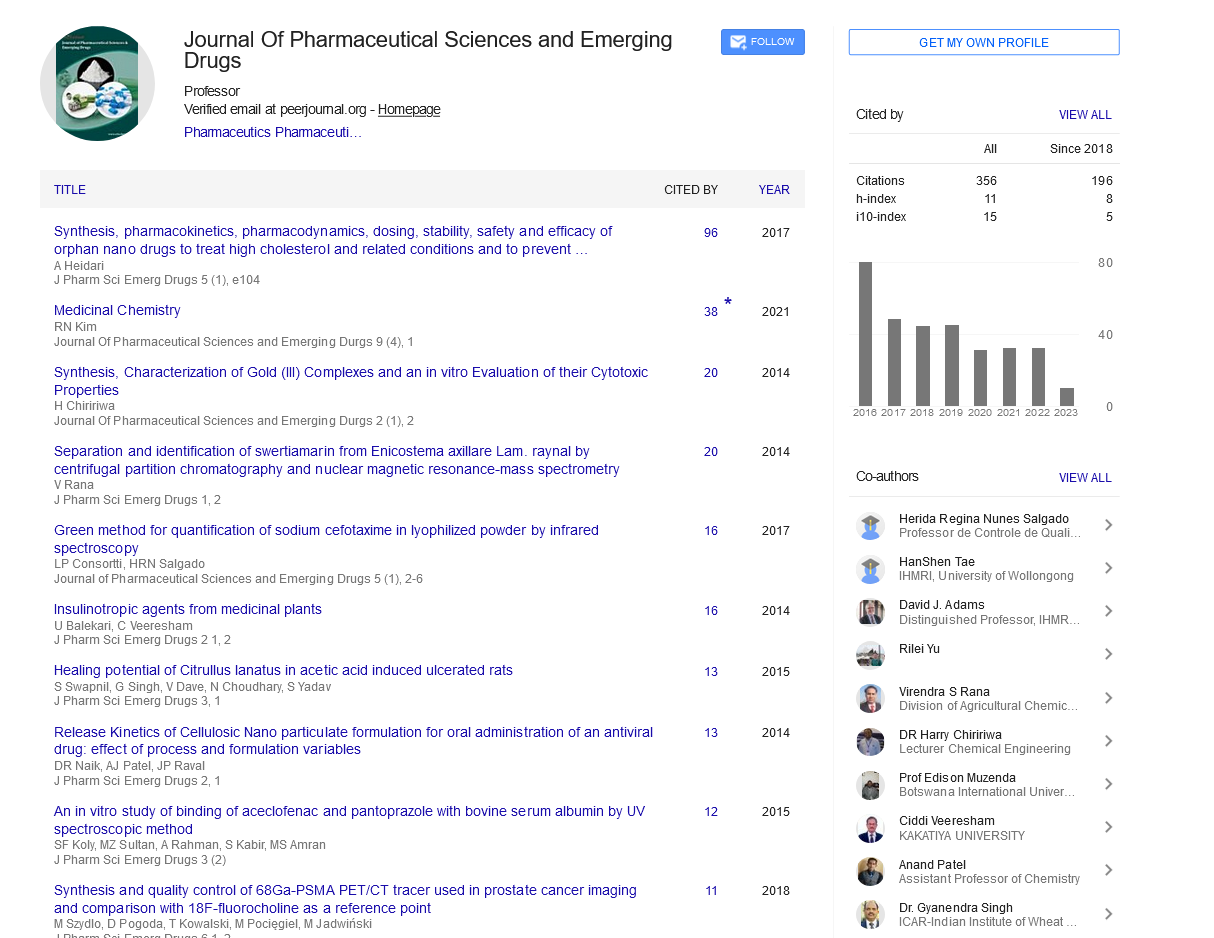Commentary, J Pharm Sci Emerg Drugs Vol: 12 Issue: 3
Translational Pharmacology: Enhancing Clinical Practice through Drug Action Research
Nicola Rocca*
1 Department of Clinical Medicine, Magna Graecia University of Catanzaro, Catanzaro, Italy
*Corresponding Author: Nicola Rocca,
Department of Clinical Medicine, Magna
Graecia University of Catanzaro, Catanzaro, Italy
E-mail: nicola@gmail.com
Received date: 22 May, 2024, Manuscript No. JPSED-24-148987;
Editor assigned date: 24 May, 2024, PreQC No. JPSED-24-148987 (PQ);
Reviewed date: 07 June, 2024, QC No. JPSED-24-148987;
Revised date: 14 June, 2024, Manuscript No. JPSED-24-148987 (R);
Published date: 21 June, 2024, DOI: 10.4172/2380-9477.1000186
Citation: Rocca N (2024) Translational Pharmacology: Enhancing Clinical Practice through Drug Action Research. J Pharm Sci Emerg Drugs 12:3.
Description
The transition from drug action study to clinical practice is a major juncture in the healthcare continuum. While extensive study is conducted to understand the mechanisms of drug action, the challenge remains to effectively translate these findings into practical applications that improve patient outcomes. Bridging this gap requires collaboration among studyers, clinicians and regulatory bodies, as well as a focus on personalized medicine and patient-centered approaches. The strategies for enhancing the translation of drug action study into clinical practice, ultimately leading to improved healthcare delivery. Translational study plays a pivotal role in bridging the gap between laboratory findings and clinical applications. This type of study seeks to transform scientific discoveries into new therapies and medical practices that can directly benefit patients. In the context of drug action, it involves a multi-step process that begins with basic study and culminates in clinical trials and eventual implementation in healthcare settings.
To facilitate this process, it is essential to foster collaboration between academic studyers and healthcare practitioners. Such partnerships can enhance the relevance of study questions, ensuring that studies address real-world clinical challenges. For instance, involving clinicians in the early stages of drug development can lead to the identification of patient populations that may benefit most from a new therapy, thus optimizing clinical trial designs. Regulatory agencies, such as the Food and Drug Administration (FDA) in the United States, play a major role in the translation of drug action study into clinical practice. These agencies set the standards for evaluating the safety and efficacy of new medications and therapies. However, the regulatory pathway can sometimes be lengthy and complex, creating barriers to timely access to innovative treatments.
To address these challenges, there has been a push for more flexible and adaptive regulatory frameworks that can accommodate the rapid pace of scientific advancements. For example, the FDA's breakthrough therapy designation allows for expedited development and review of therapies that demonstrate significant improvements over existing options for serious conditions. Such initiatives can help streamline the process of translating drug action study into clinical practice, ensuring that patients benefit from new therapies more quickly. Personalized medicine is another major aspect of bridging the gap between drug action study and clinical practice. Understanding the pharmacogenomics of drug action the way an individual’s genetic makeup influences their response to medications enables the development of tailored treatment plans.
By integrating genetic testing into clinical practice, healthcare providers can select the most effective therapies for their patients, minimizing adverse reactions and maximizing therapeutic benefits. For instance, drugs like warfarin require careful dosing adjustments based on individual genetic profiles to prevent adverse drug reactions. Such personalized approaches not only enhance patient safety but also improve overall treatment outcomes. Finally, incorporating patientcentered approaches into drug action study is vital for bridging the gap with clinical practice. Engaging patients in the study process can provide valuable insights into their needs, preferences and experiences, leading to more relevant and effective interventions. Furthermore, educating patients about drug actions, potential side effects and treatment options empowers them to participate actively in their care.
Conclusion
Bridging the gap between drug action study and clinical practice is essential for enhancing patient care and optimizing therapeutic outcomes. By fostering collaboration among clinicians advocating for adaptive regulatory frameworks, embracing personalized medicine and prioritizing patient-centered approaches, the healthcare community can ensure that scientific advancements translate into tangible benefits for patients. Ultimately, a concerted effort to bridge this gap will lead to improved healthcare delivery, transforming the landscape of modern medicine and fostering a culture of innovation and excellence in patient care.
 Spanish
Spanish  Chinese
Chinese  Russian
Russian  German
German  French
French  Japanese
Japanese  Portuguese
Portuguese  Hindi
Hindi 